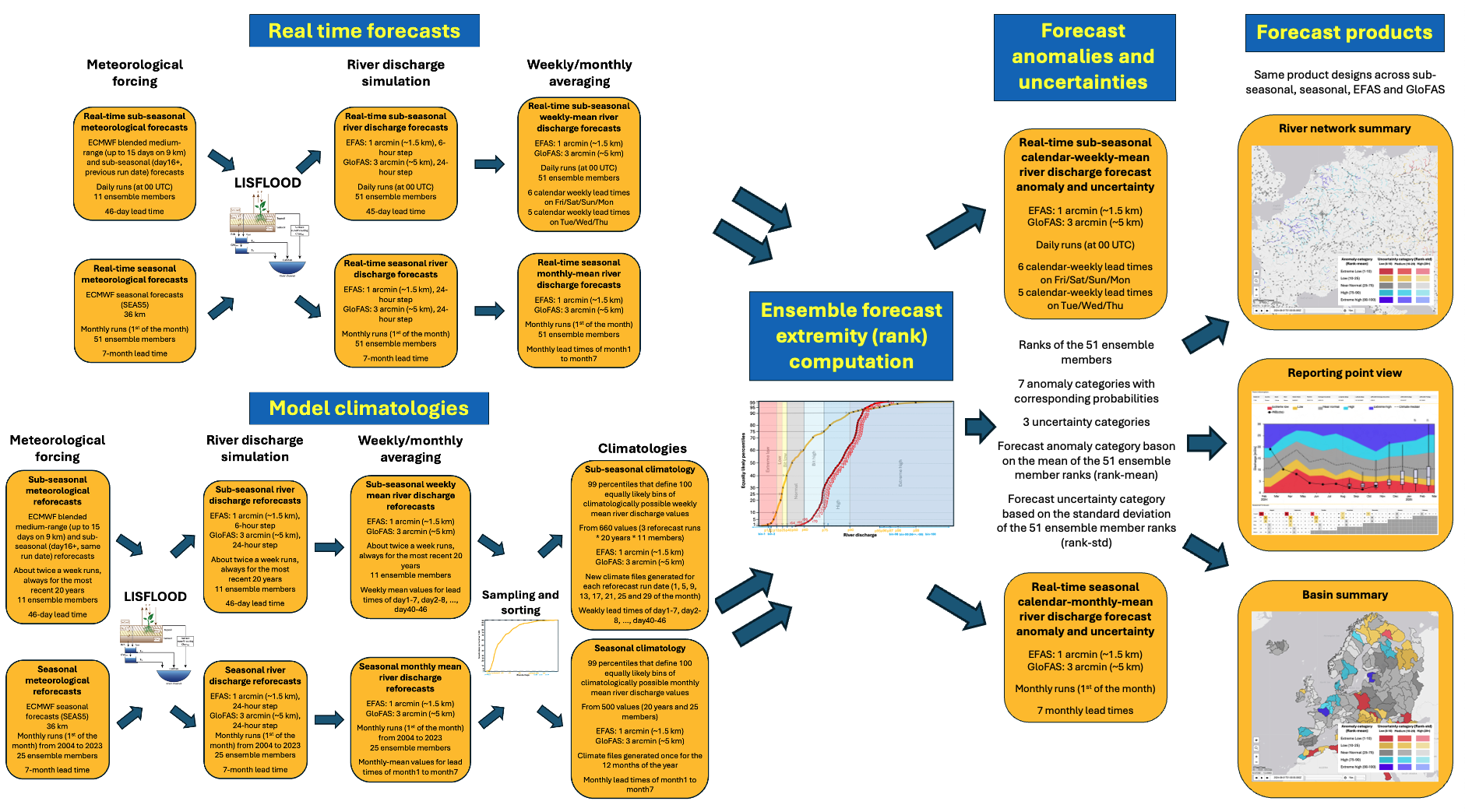...
The generation of the sub-seasonal and seasonal forecast signal relies on few major steps, illustrated by a flowchart in Figure 1. The , with some further details described in Figure 2 and 3. The forecast anomaly and uncertainty signals are derived by comparing the real time forecast (top left section in Figure 1) to the 99-value percentile climatology (bottom left section in Figure 1). The real-time forecasts are based on the ECMWF sub-seasonal and SEAS5 seasonal meteorological forecasts (Figure 2), while the climatology is generated using reforecasts (from the same two systems) over a 20-year period, which provides range-dependent climate percentiles that change with the lead time . The climate generation is described in the bottom left corner of Figure 1. (Figure 3).
Figure 1. Flowchart of the sub-seasonal and seasonal anomaly and uncertainty signal generation methodology.
Figure 2. Flowchart of the details in the real-time forecast generation for the sub-seasonal and seasonal forecasts.
Figure 3. Flowchart of the details in the model climatology generation for the sub-seasonal and seasonal forecasts.
The CEMS-Flood sub-seasonal products cover cover calendar week periods (i.e. always Monday-Sunday), while the CEMS-Flood seasonal products are valid for whole calendar month periods. The forecast signal is derived from the relationship between the calendar weekly or monthly averaged river discharge and the climatological distribution of the historical weekly- or monthly-averaged values. While calendar month naturally allow consistency checks, the fixed-calendar weekly lead-times in the sub-seasonal were introduced to similarly allow users to directly compare forecasts from different forecast runs, as the verification periods will be fixed onto the calendar weeks, with different corresponding lead times from the forecast, depending on the day of the week the forecast did run.
...



